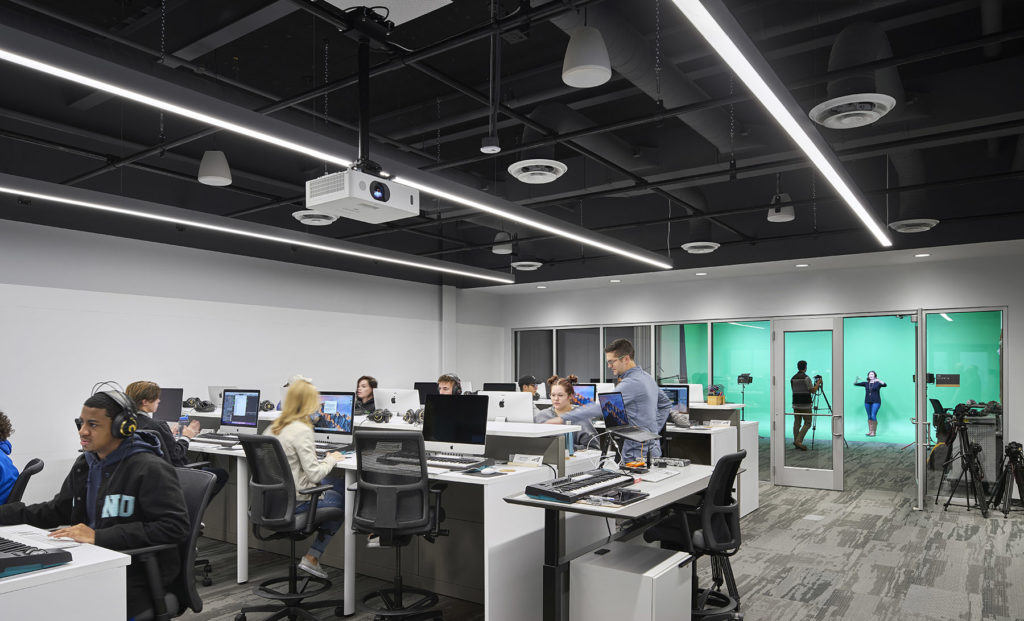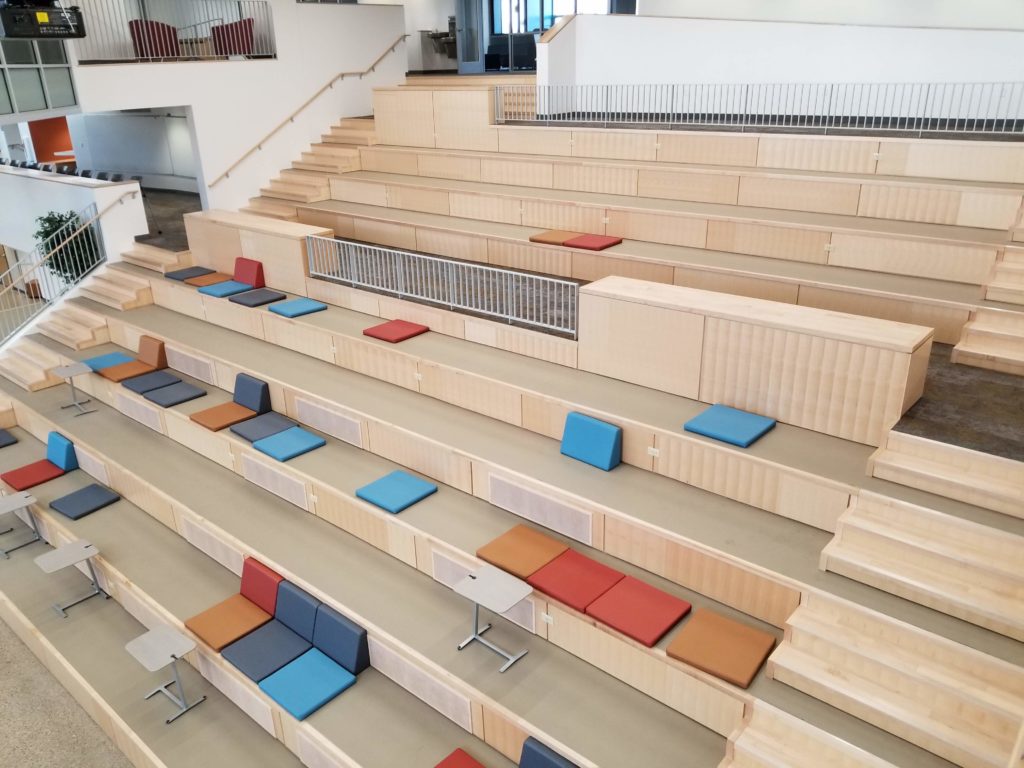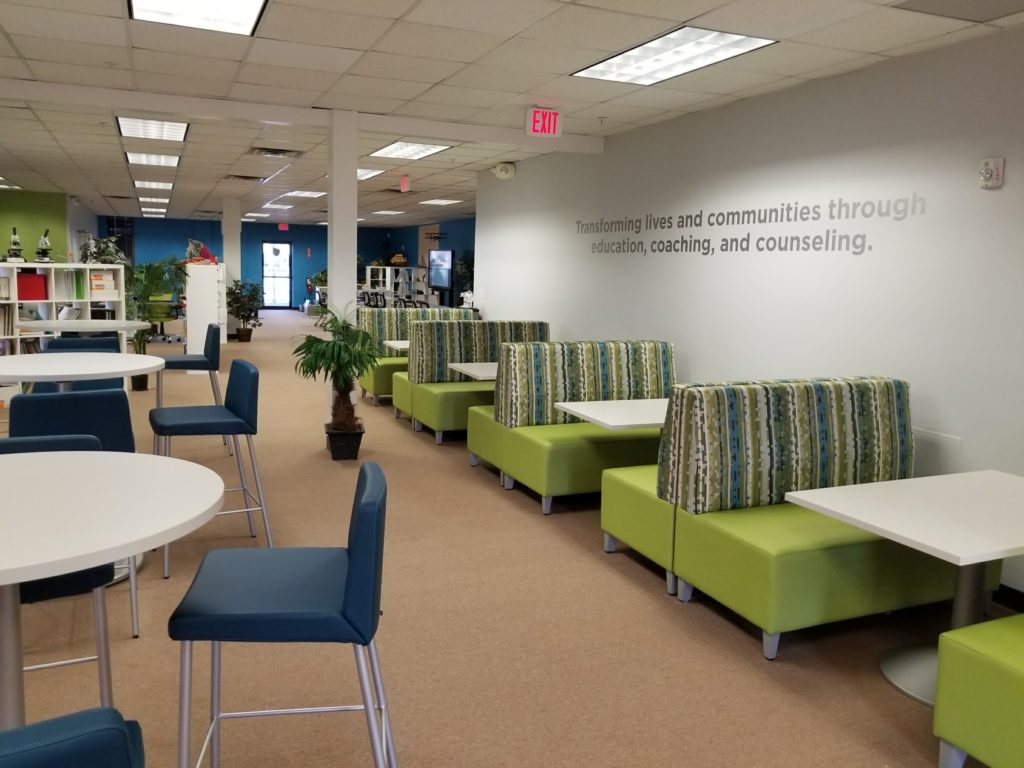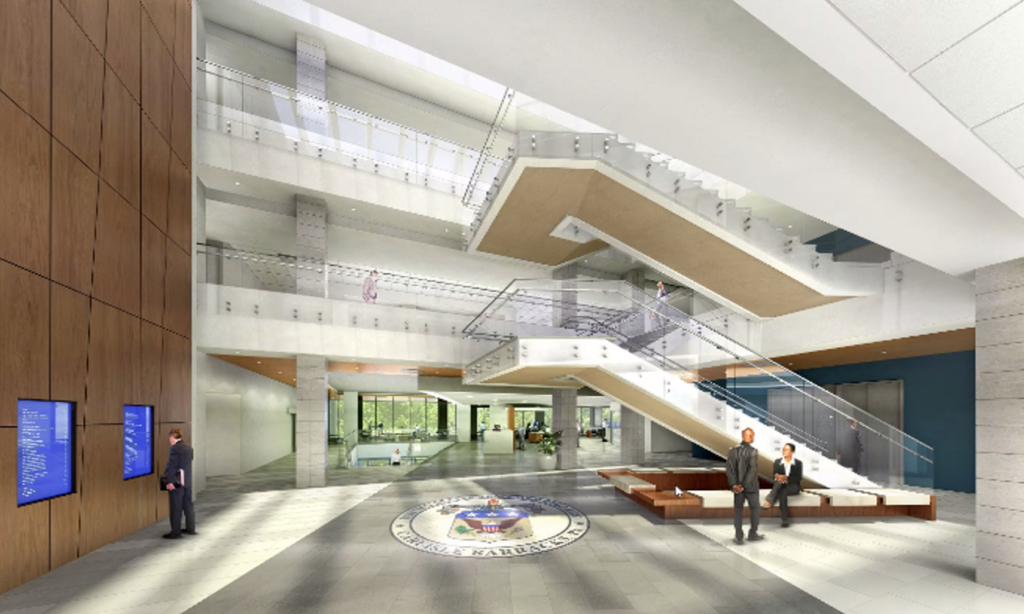The COVID-19 pandemic has fundamentally disrupted nearly every aspect of education with undetermined long-term consequences. However, that has not prevented innovation in learning, teaching, and space planning for both K-12 and Higher Education. We asked educational facility experts, some of whom are presenting at the EDspaces 2020 Digital Experience, November 10-12, 2020, about the adjustments being made to planned construction, pedagogy, learning spaces, and emerging technologies. They share thoughts on future impacts related to planning, design, and campus infrastructure.
Technology
The global shift toward increasing dependence on technology has administrators and facility planners studying space allocation and technology resource needs. This is especially true with the sudden turn toward for distance learning and the pedagogical changes that may be present well into our post-vaccine future.

“At the outset of the pandemic quarantine period, most educators moved to makeshift “Zoom” models, with mixed results,” says Craig Park, FSMPS, Associate AIA, a Principal Consultant at Sextant Group/NV5. “As we move toward the Fall, those that are reopening have spent more on outfitting classrooms with hybrid/flexible technology (“Hyflex”) systems that allow for blended participation by both in-class and from-home students.” Others are in a “wait and see mode” before making any significant operational spending as they watch the results from other educational institutions.
“We have different needs now than we had before,” says Dan Case, Associate Director, Academic Technology at Carroll College. There is high demand for microphones, cameras, speakers, webcams, and mobile/laptop devices along with whiteboards for remote collaboration and outside furniture. “Our supply chains have been significantly disrupted so it takes longer to get what we need, and in some cases, we have had to change the products we purchase due to them being unavailable.”

“Educators have a growing confidence around technology use,” says Dr. Robert Dillon, noted author, speaker, educator, and lifelong learner. With virtual learning taking place from pre-K to higher ed, the primary instructional delivery method for students is remote learning via video link. For the K-12, “we will also see growth in the online virtual school model as many families embrace the possibilities that come from the freedom of learning remotely.”

Distance Learning
Hybrid learning models that mix distance, hands-on, and small-group learning are becoming increasingly popular at educational institutions across the country. On-demand content and educators being more comfortable with technology tools, have, in some cases, replaced the traditional lecture hall of 100 with a mix of hybrid solution of online lectures combined with small, in-person discussion groups or Zoom breakout rooms.
“We have been addressing how to engage both the in-person students and online learners simultaneously, how to improve the audio coverage in a classroom, and how to address group work in a blended environment,” says Lauren Turin, Director, Classroom Technologies at Duquesne University.
With the technology tools now becoming commonplace for both online and semi-synchronous education, distance learning provides the benefits of having students learn at their own pace and on their own schedule by watching videos, listening to audio recordings, and participating in virtual or augmented reality simulations.
“My department was given a budget to outfit 85 Registrar-controlled classrooms with the ability to teach using Zoom with a reduced number of students attending in person and the remainder logging in remotely, says Turin. “We deployed webcams on stands and array microphones into each space so all classes can be delivered in the hybrid, HyFlex, approach. They are able to see, hear, and most importantly, interact with their fellow classmates and the instructor.”
With the technology tools now becoming commonplace for both online and semi-synchronous education, distance learning provides the benefits of having students learn at their own pace and on their own schedule by watching videos, listening to audio recordings, and participating in virtual or augmented reality simulations.
“Going forward, the move to develop blended occupancy — the Hyflex approach, noted above — is being studied as a promising solution,” says Park. In this model, rooms are designed with a bank of monitors or tiled-screens above the teaching wall (so in-class students can see their virtual cohorts) and a similar bank of monitors/screens on the rear wall (for the instructor’s view of the “whole” class). Collaboration controls, cameras and sound systems allow everyone to participate and share content. “This is an expensive solution, so it may only be appropriate in key spaces at the outset. The bigger challenge remains to adapt both didactic and active/team pedagogies to this new blended-facility model.”
Budgets, Infrastructure & Sustainability
Although Congress passed the CARES Act to help address the novel coronavirus crisis, states will now be dealing with budgetary shortfalls as a result of massively decreased tax revenue from funding streams including sales, amusement, hotel occupancy, and income taxes, as well as dim forecasts for real estate that will affect property taxes. These shortfalls, compounded by increased spending on public health in order to combat COVID-19, will undoubtedly affect future education budgets. How schools and colleges weather the economic storm will depend on several factors, including the duration of the pandemic, the size of their rainy-day funds, and whether they act quickly to keep budgets balanced by increasing revenue or making cuts.

“There is tremendous uncertainty with future budget cycles. This year will be easier than 2021-22 when funding from local and state government shrinks,” says Dillon. “Schools will have to make decisions between operations and HR. There will be some real pain in communities around the country. We will see a number of accelerated tax levy increases and bond issues on the ballot.”
Capital spending on school building and renovation projects that were already approved and funded are moving forward in design. “With a two- to three-year lag between design and occupancy, most institutions are confident that we will be post-pandemic by the time these buildings open,” says Park. “AEC [Architecture/Engineering/Construction] design teams have quickly adapted to virtual meetings and were already working in virtual building information models (BIM) for the development of construction documents.”
One higher education institution not affected by the worries of cost cutting is the United States Army War College. Modern adult learning practices were all part of the design process for new facilities and programs. “The maker spaces, innovation hubs, AR/VR labs, and 10G network planning were already in place pre pandemic,” said Colonel Robert D. Halvorson, Director of Strategic Plans. “We can’t focus on COVID-19 and be successful in the long-term mission of the college, so the pandemic is not affecting our space planning at all. While the War College has implemented all government requirements to mitigate the spread of COVID-19 and will continue to monitor and address the situation, our procurement and construction planning remains on track. To deviate for a ‘close fight’ would distract from the strategic priorities of the college.”

“In this particular crisis, the physical building is a tremendous outlet for students, and was immediately taken from them,” says Michael Meechim, Principal of NeoCity Academy in Kissimmee, FL. With the quick pivot to remote instruction, districts had to scramble to find devices and figure out for wi-fi capabilities. “Cities, states, and municipalities will have to look at how to build up this infrastructure, so we don’t have to worry about under-served populations not being able to access the internet. It is a necessity in 2020 and beyond.”
As short-term recovery decisions are made, schools are reevaluating the future. Given the significant time and effort it takes to alter campus facilities and the very long life of such assets, long-term planning will ensure learning environments can respond upcoming demands and foster healthy, and sustainable learning spaces.
A positive impact of the pandemic is that schools and colleges are investing in upgrades to buildings in the area of ventilation, lighting, and cleaning routines. “Many of these will remain which will help with the healthy buildings needed for healthy learning,” says Dillon.
Underutilized campus buildings from all eras can be transformed into sustainable, thriving, innovative learning environments that align with current and future needs. Rather than replacing them, more planners are considering the benefit of adaptive or transformative reuse that creates space for today’s learners and reduces greenhouse gas emissions.
The Future
It is in this environment that facility planners must evaluate how they will be positioned to respond to tomorrow’s opportunities for teaching, learning, collaboration, and engagement.
Dillon believes the COVID experience of distance learning has pushed educators to rethink the delivery of the educational experience. “Schools will begin to provide more paths and paces to meet the personalized needs of students with more teacher-created videos that allow for more flexibility to when students learn and when students have access to content.”
The transformation of education will require a different thought process in how to design our buildings and learning spaces for students to be successful in the 21st century,” says Deborah Kerr, CEO of Lead Greatly, LLC. “We need to continue to think about the differentiated ways in which teachers will be required to deliver world-class instruction.”
“I believe the pandemic has changed the face of higher education,” says Turin. “Now that we know we can teach in-class and remote students in all our university classrooms; I see that as the future.” The hybrid approach provides students the flexibility to attend a class online if they so desire. Athletes who have to travel to compete or those with childcare or family issues can attend classes online. “I would image a future where faculty now have two class rosters: one for the face to face students and one for the online attendees. Positive changes can and will result because of this pandemic.”

